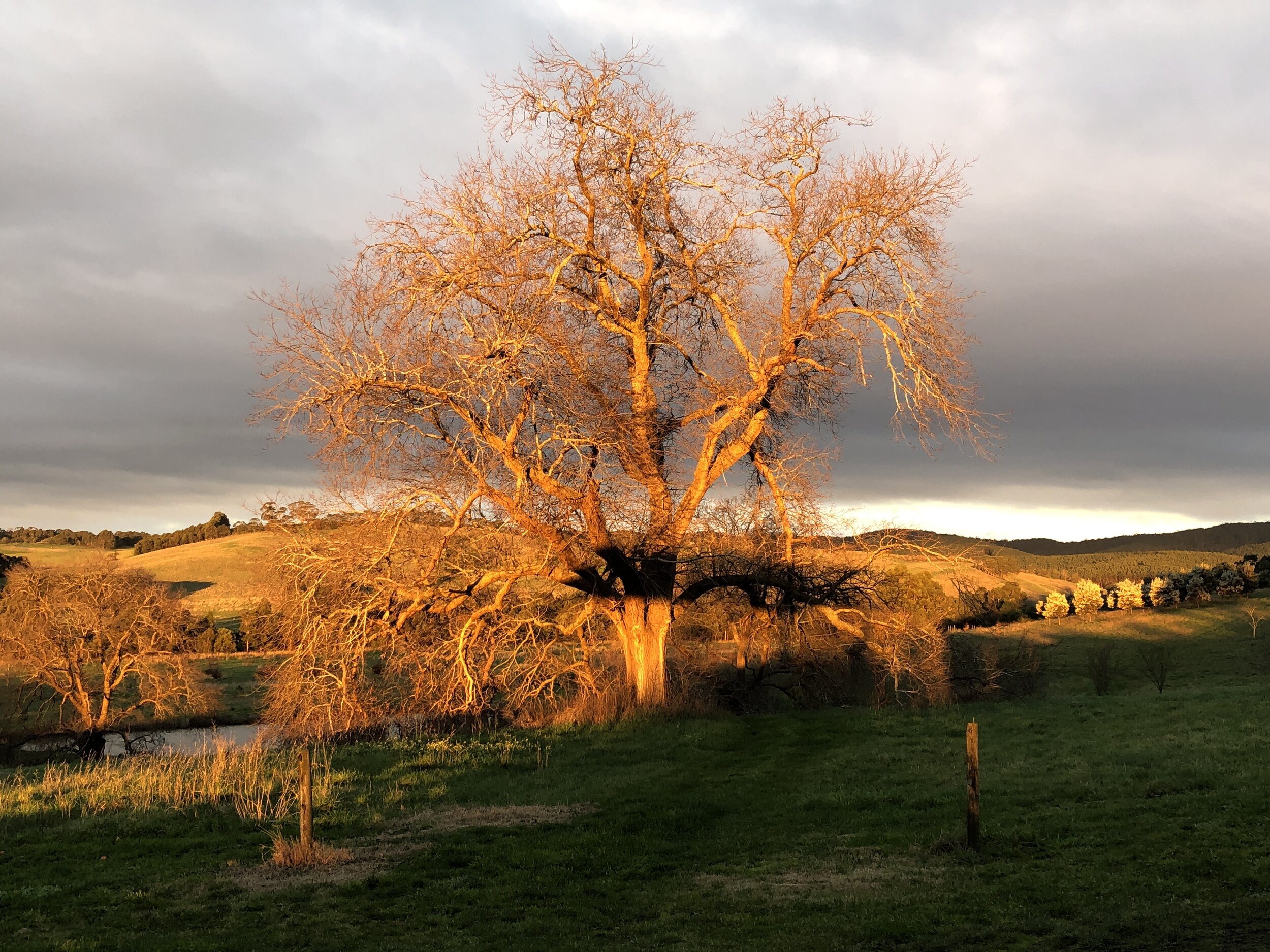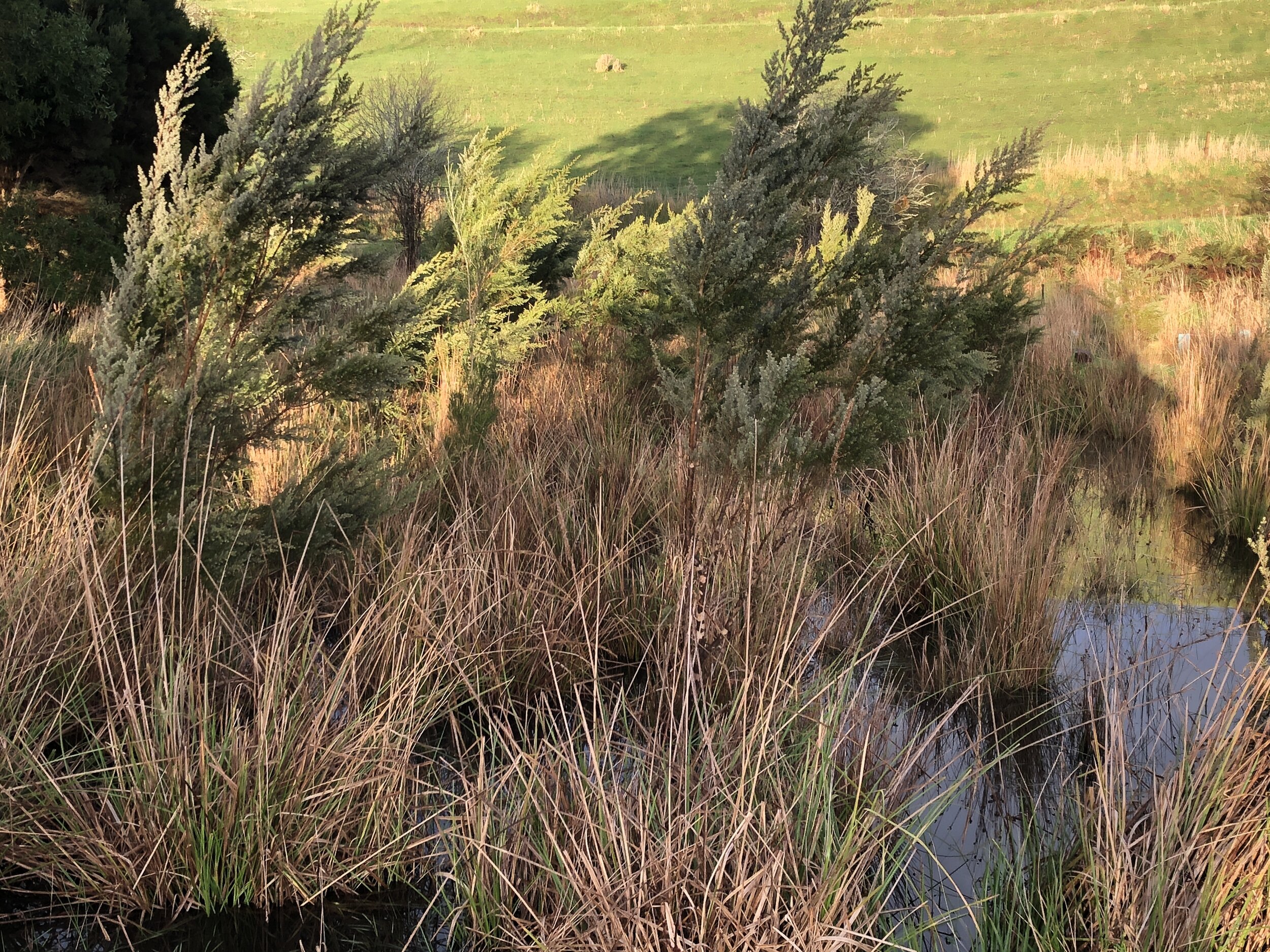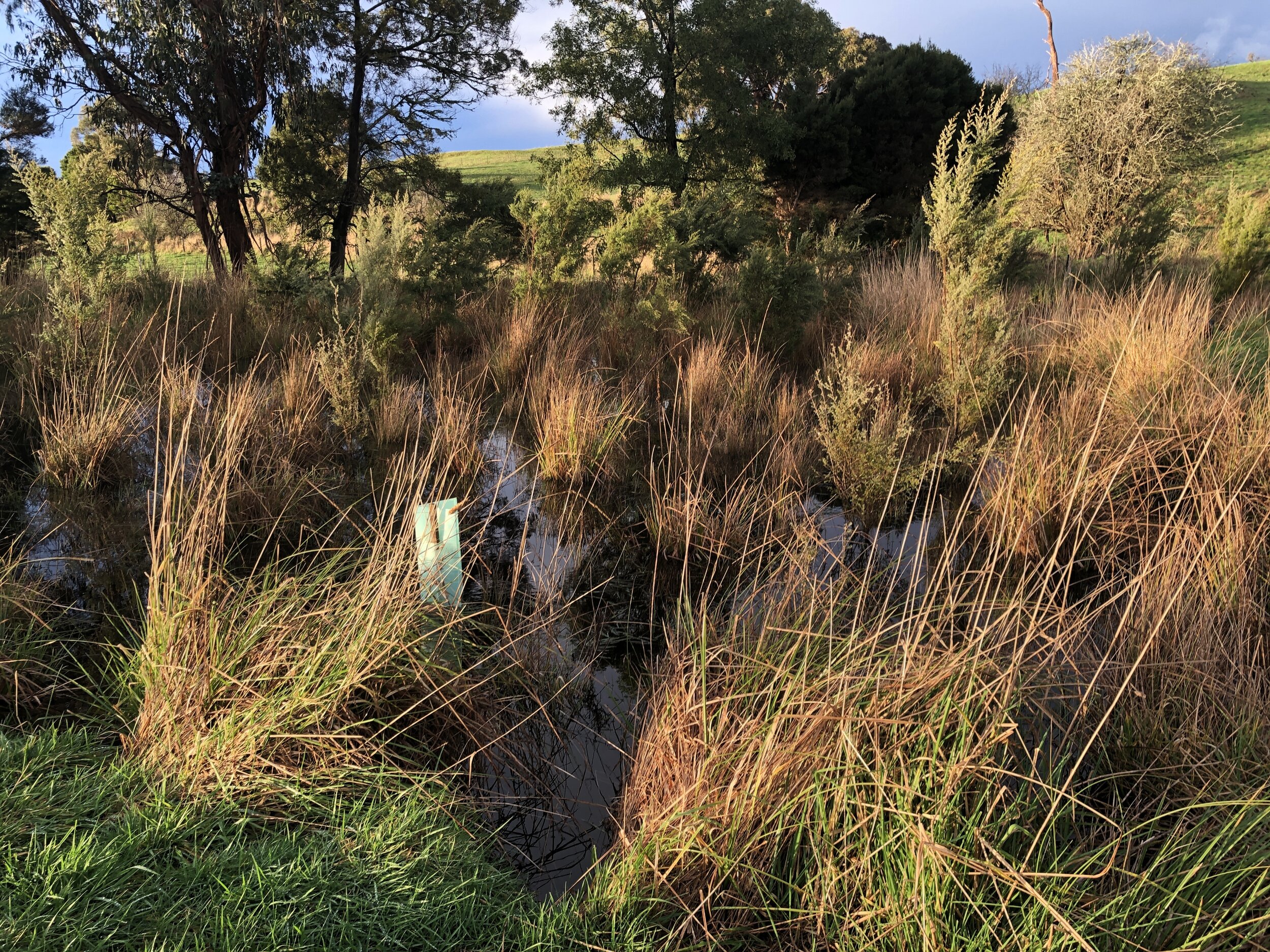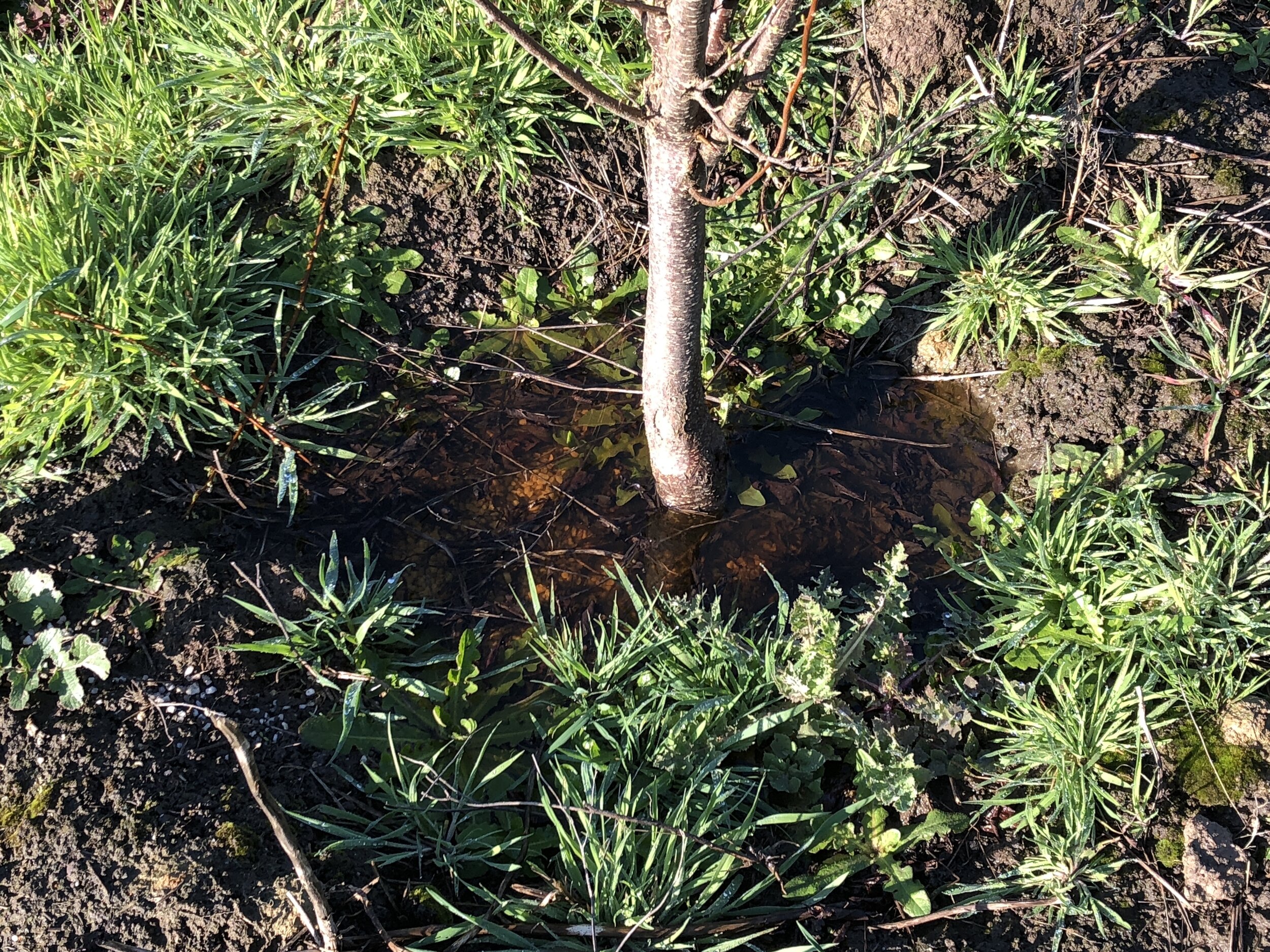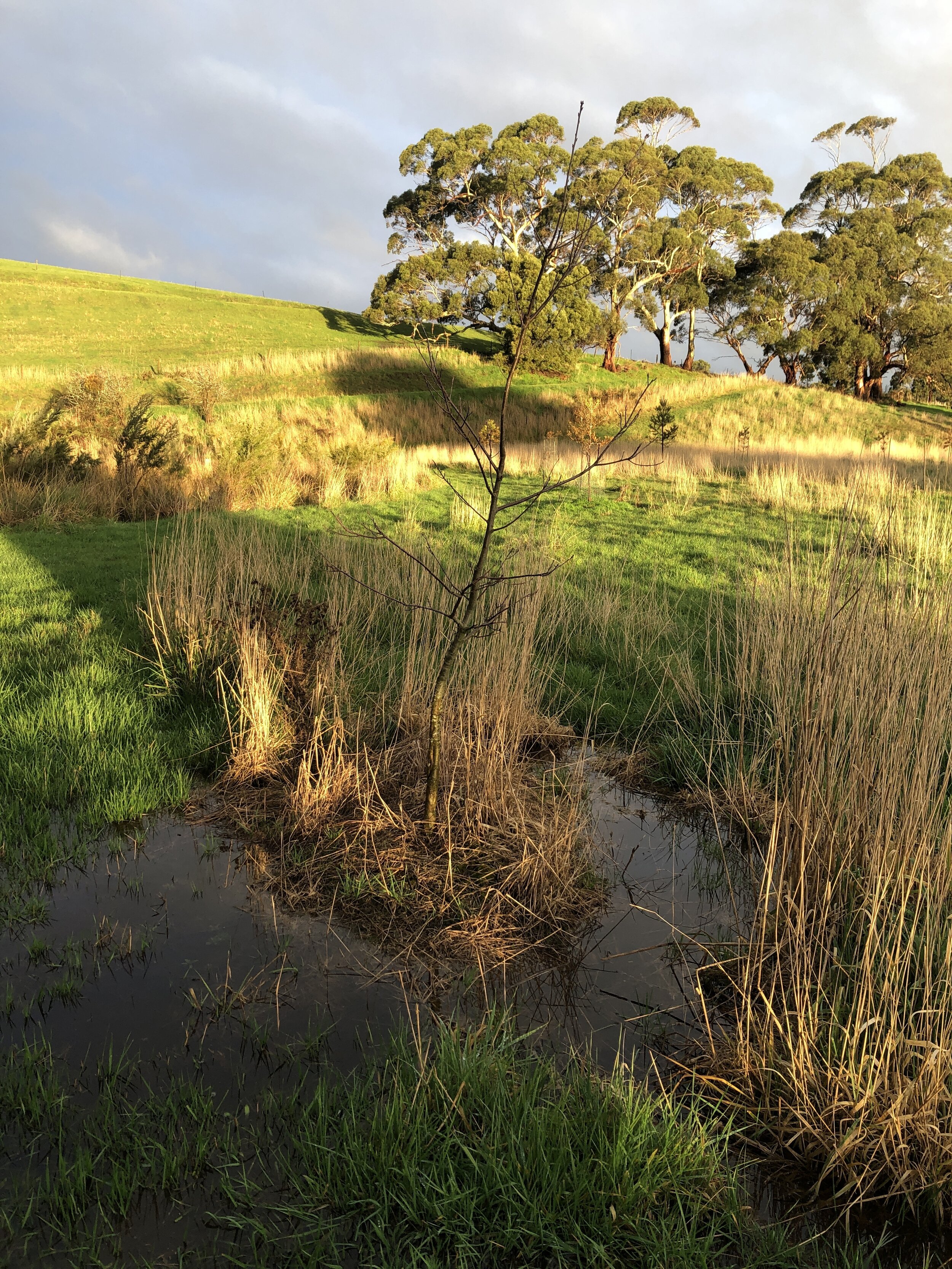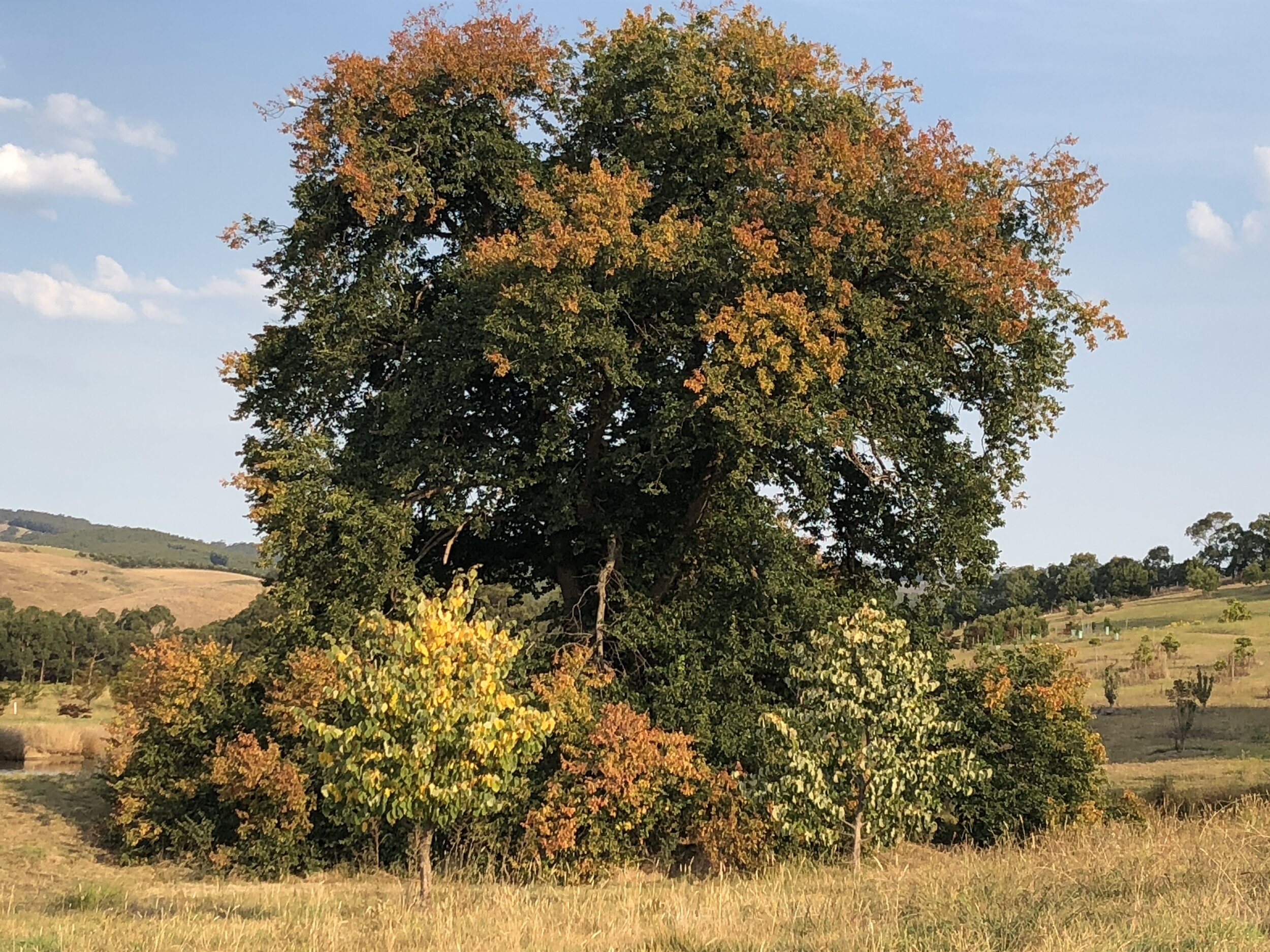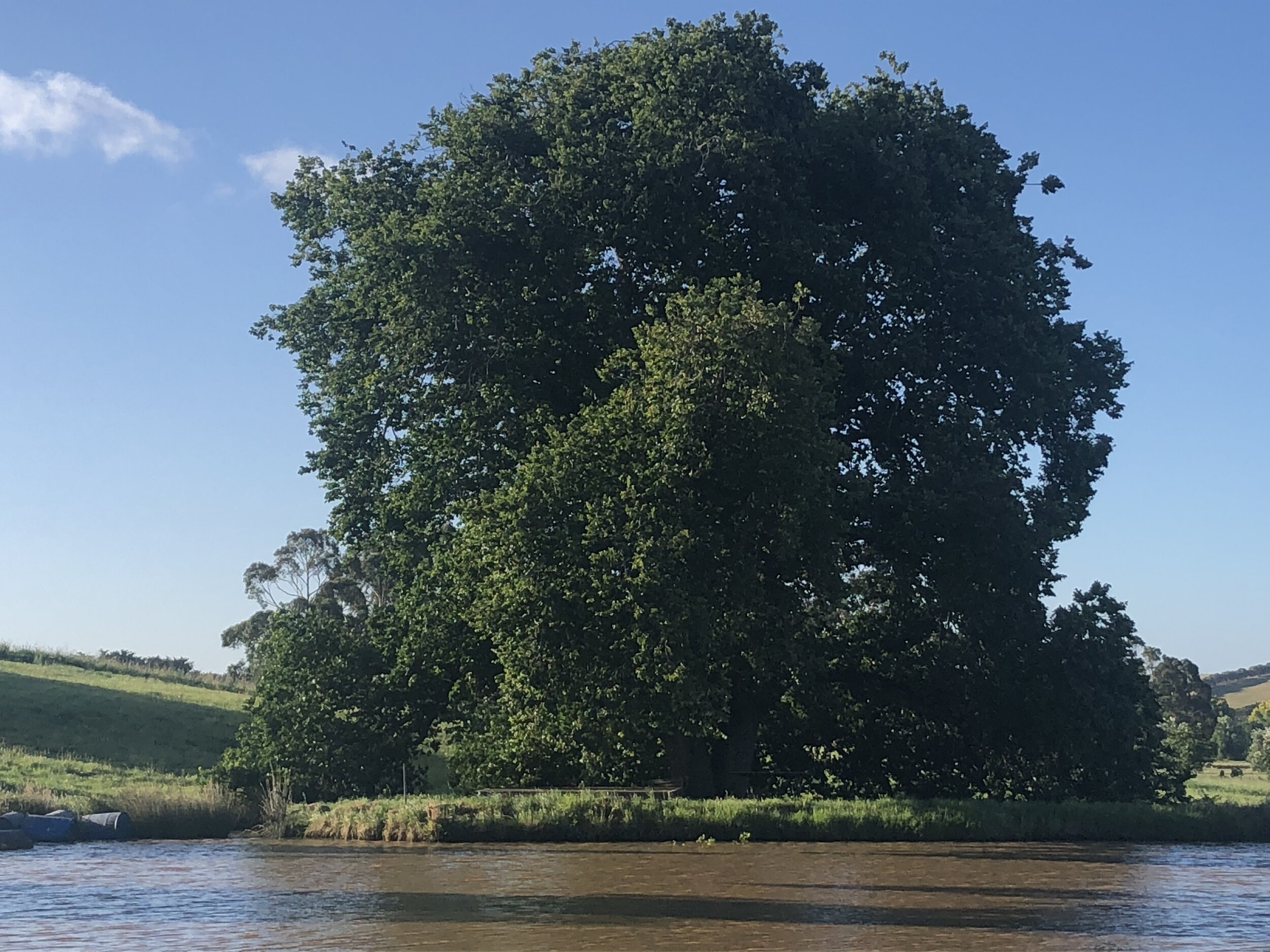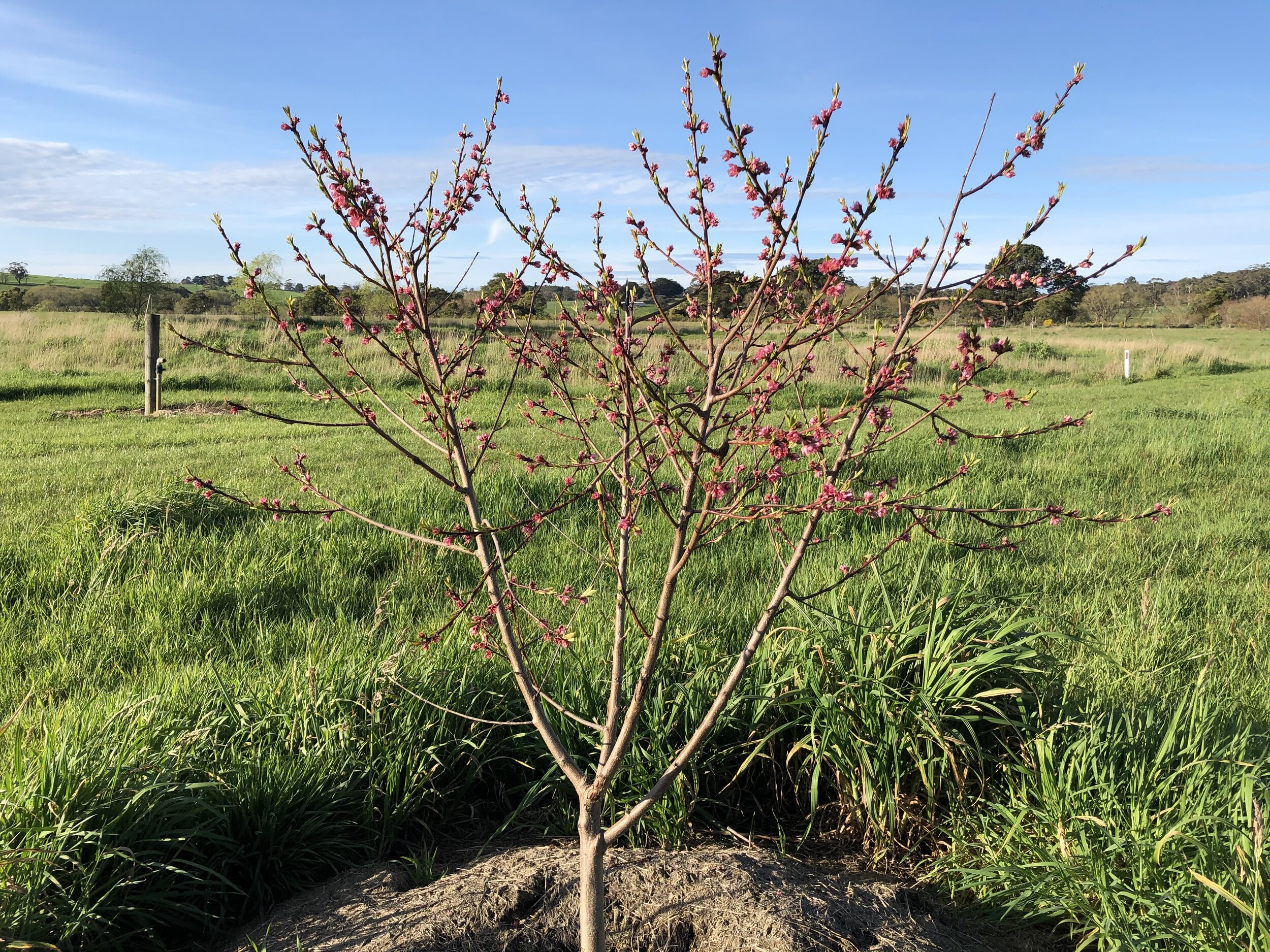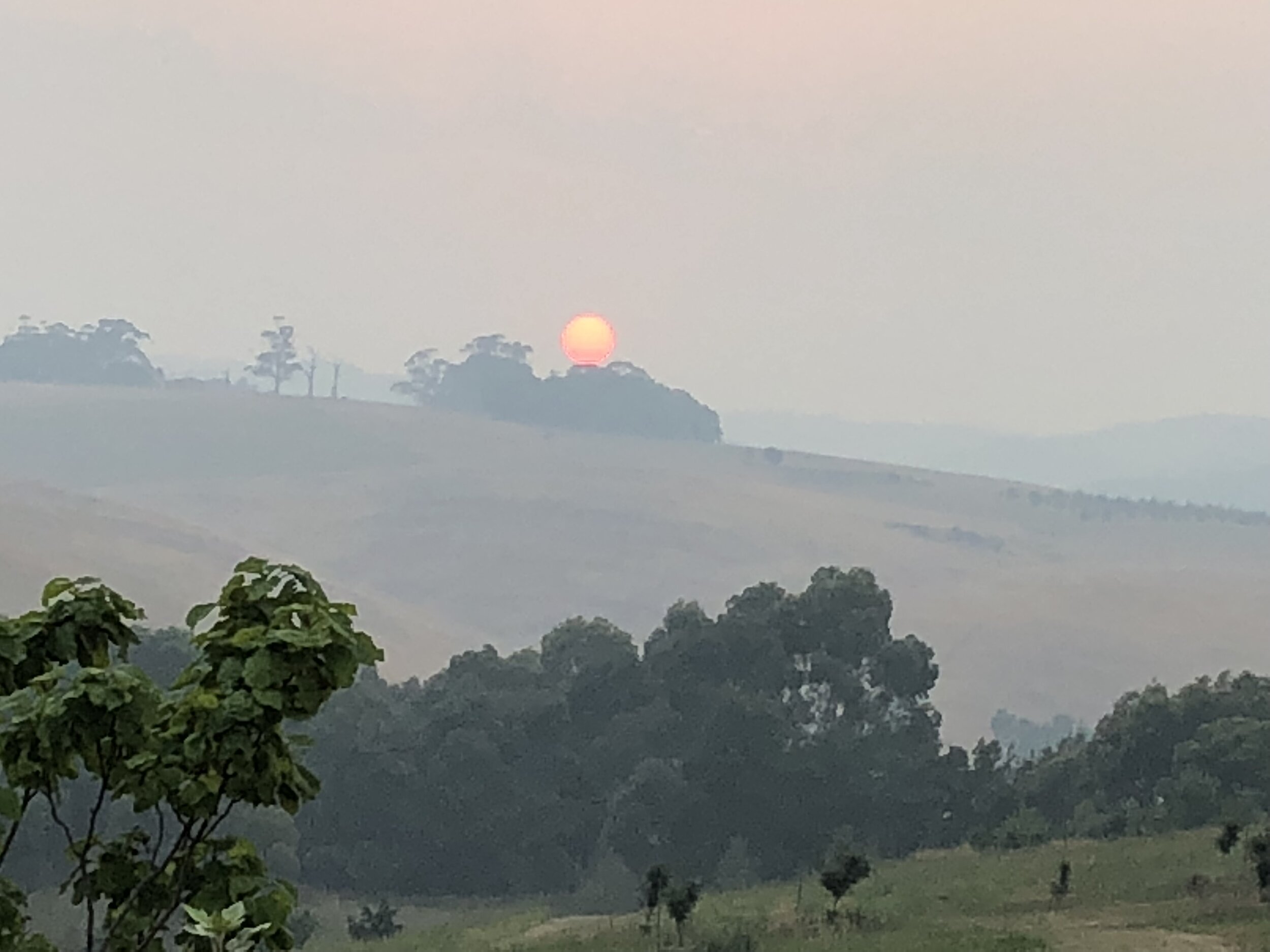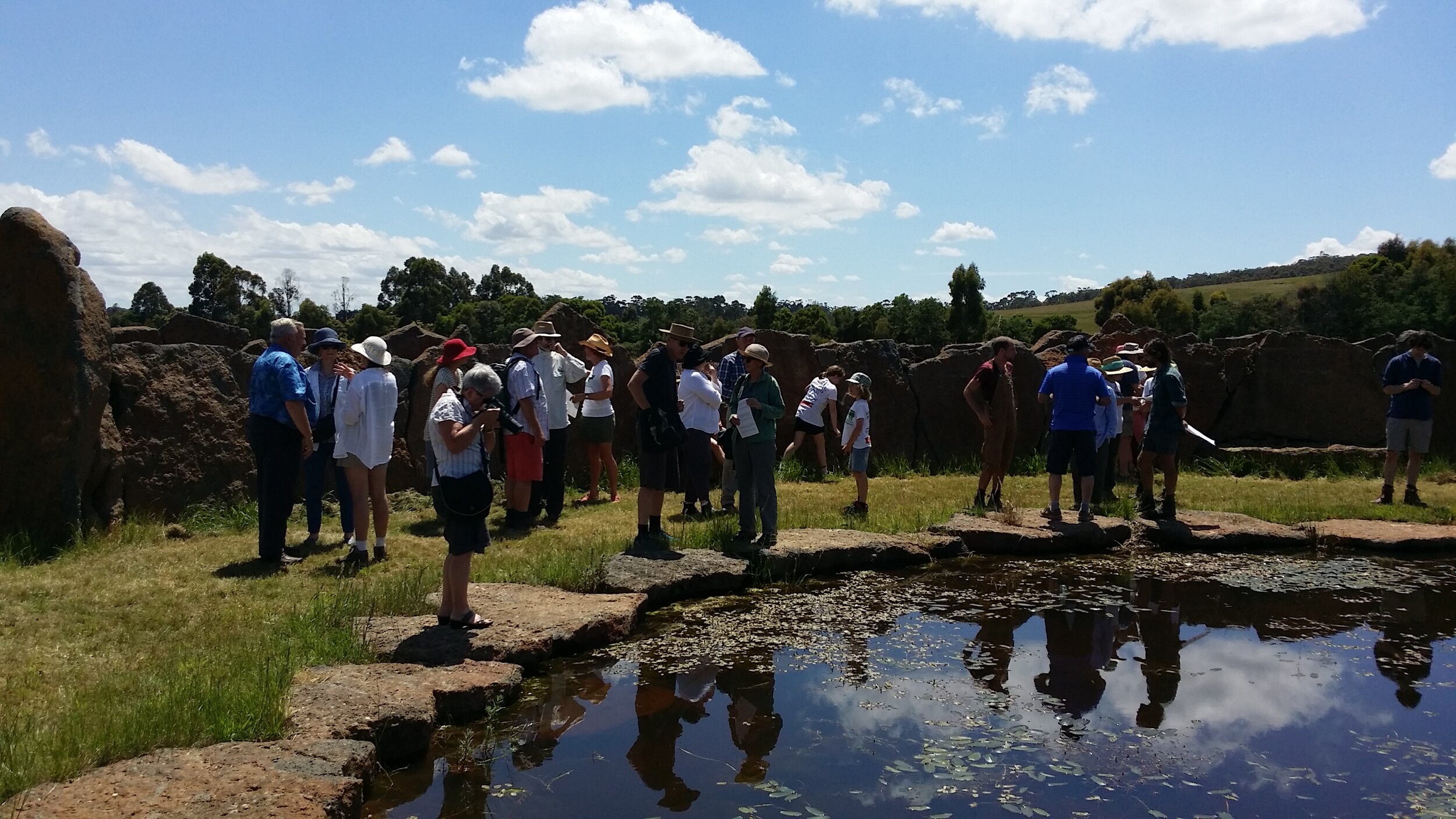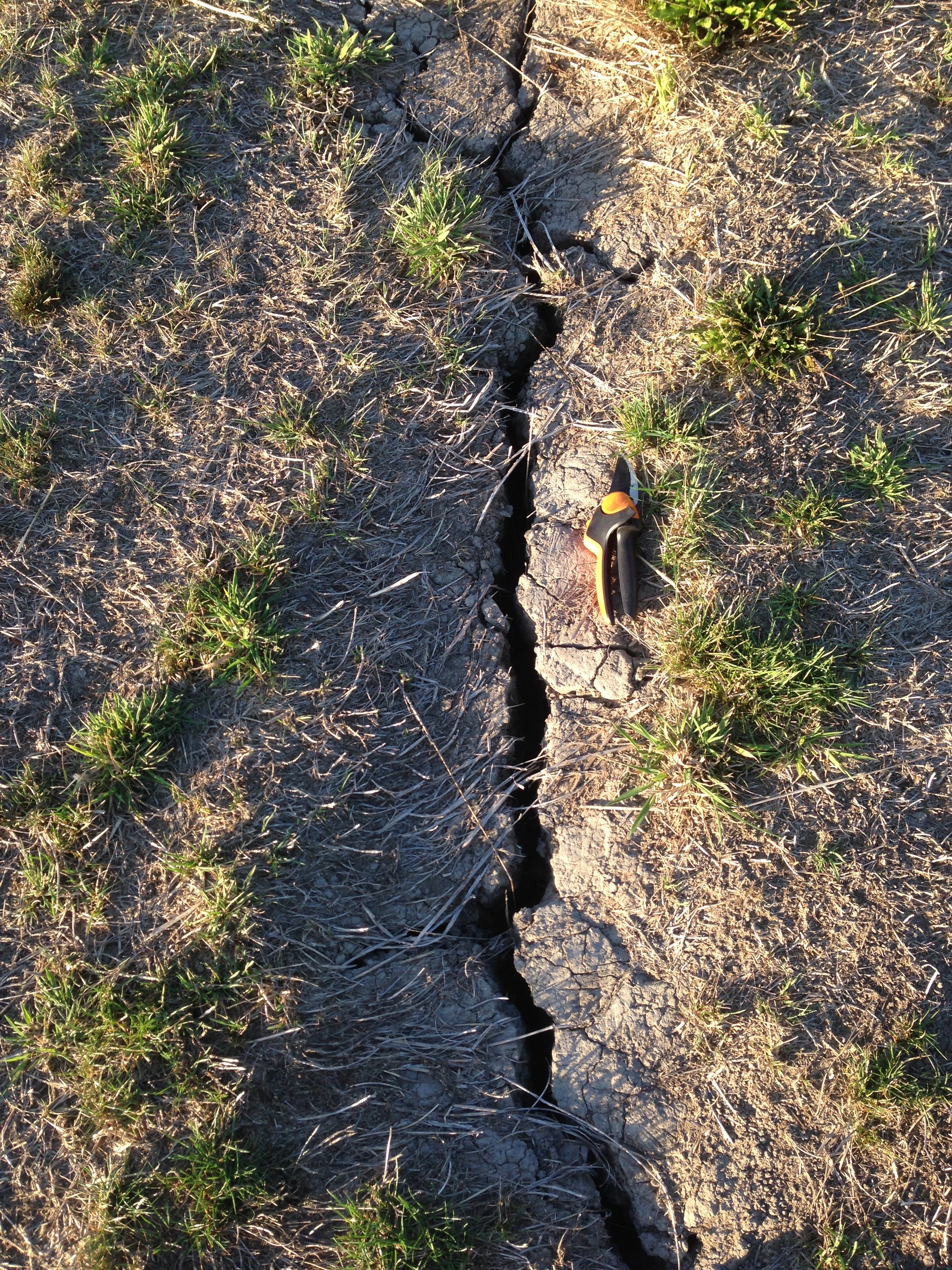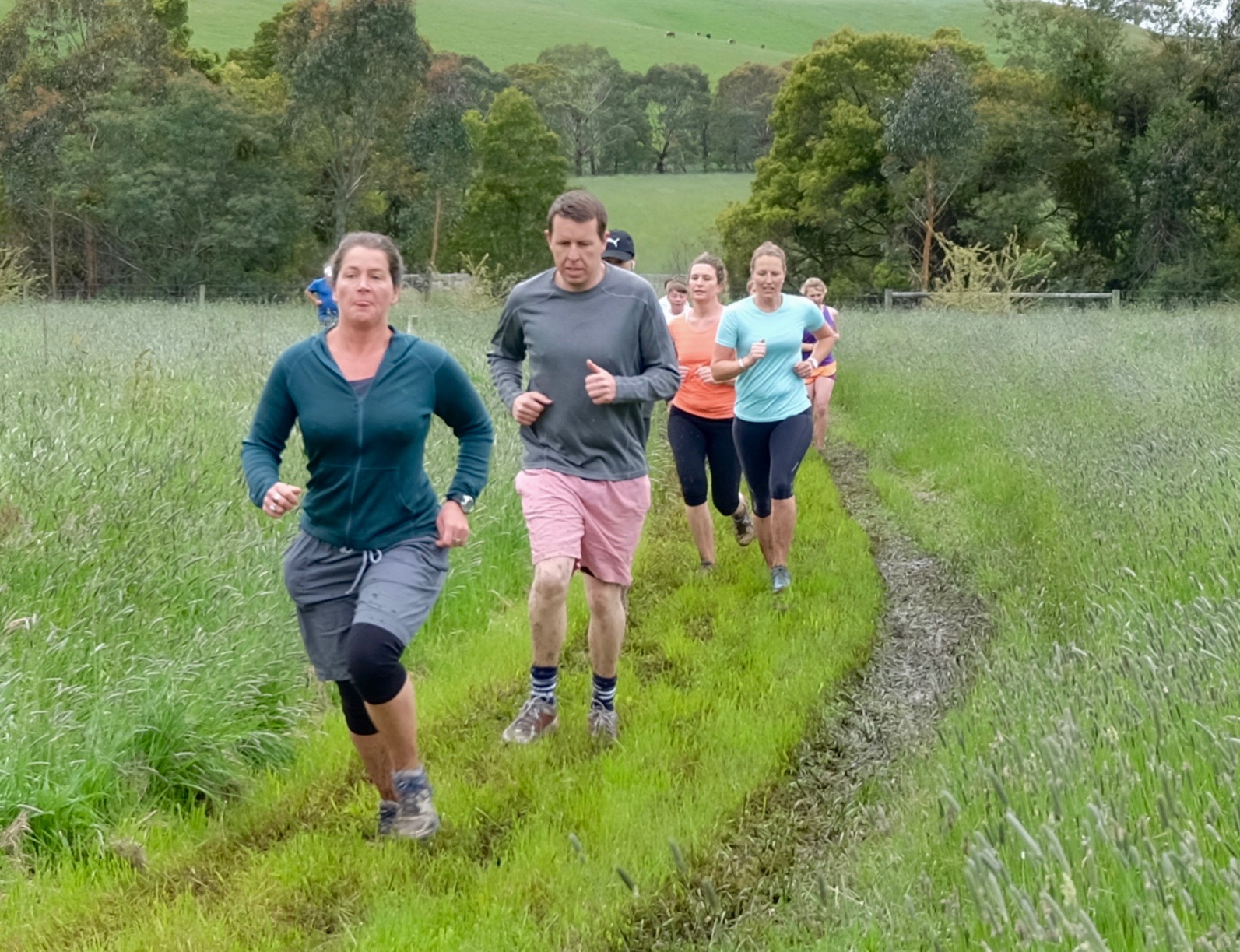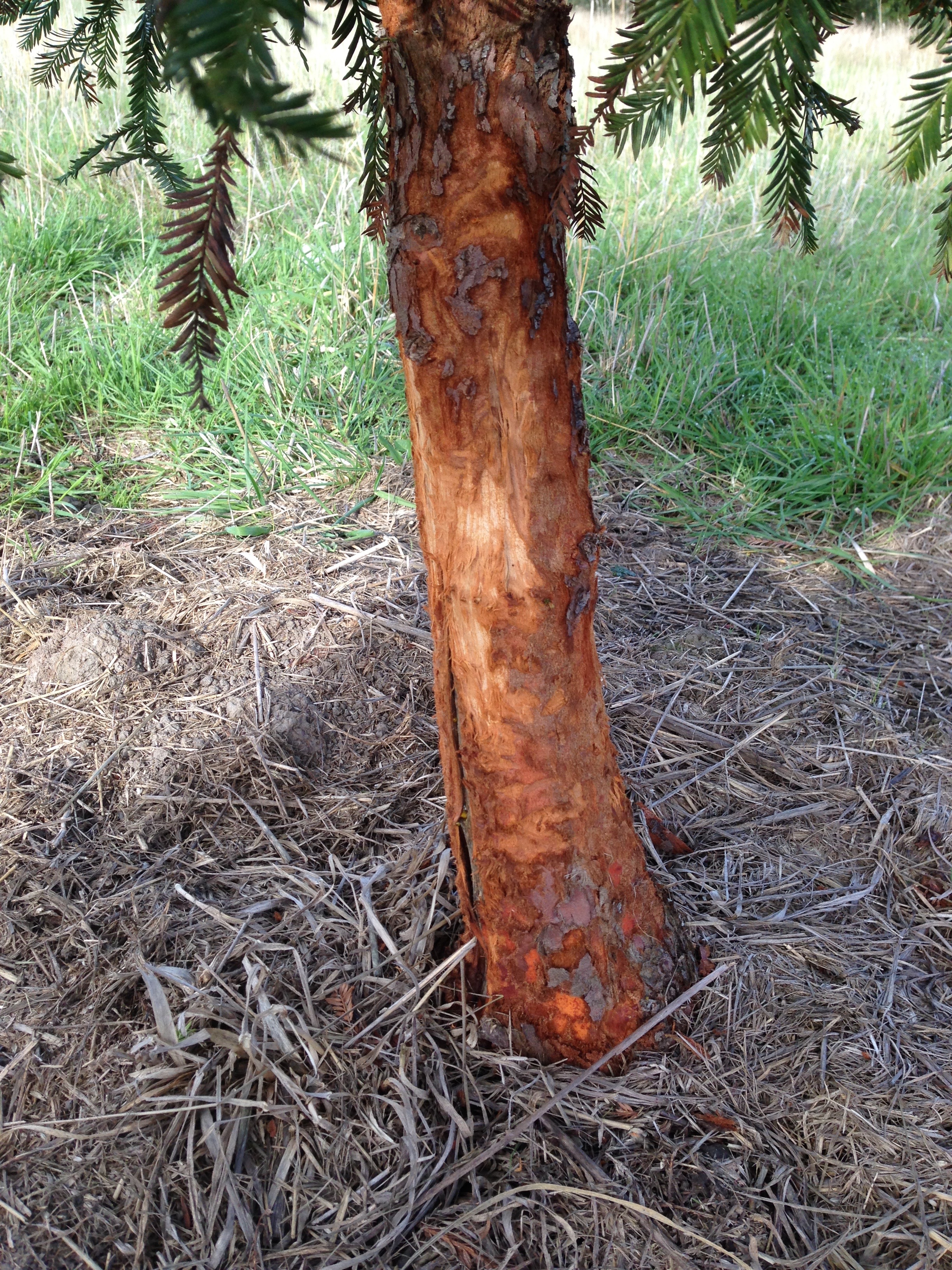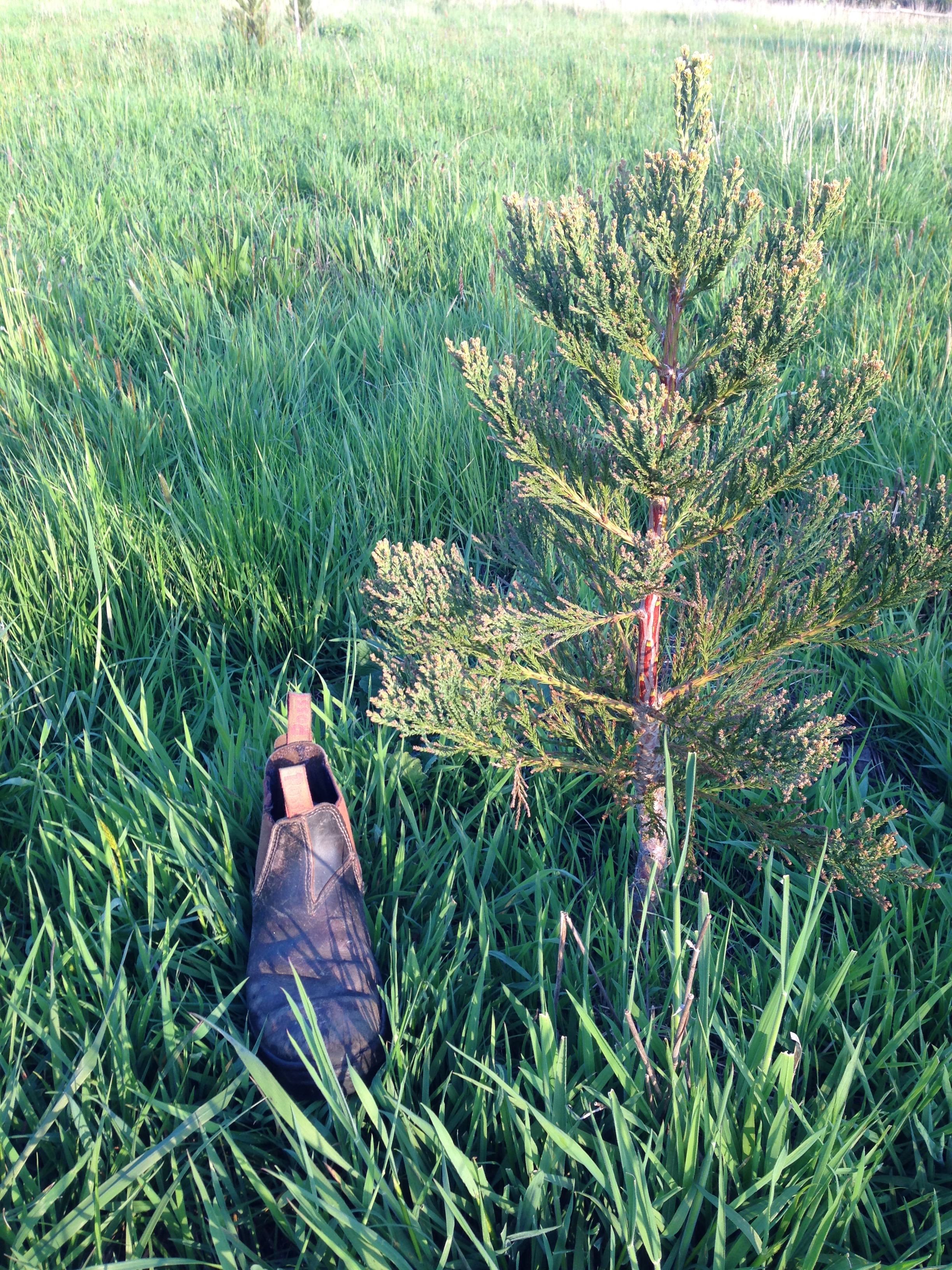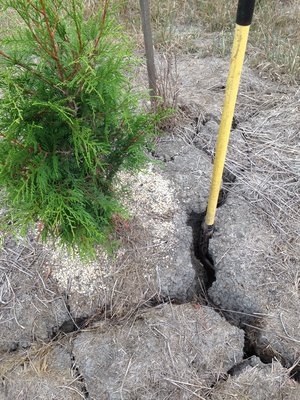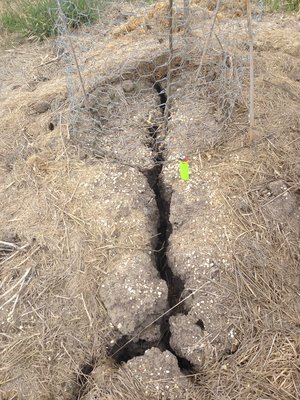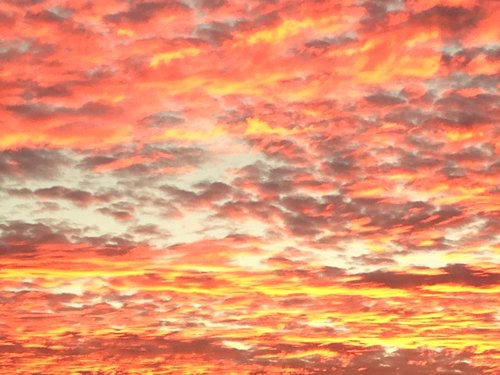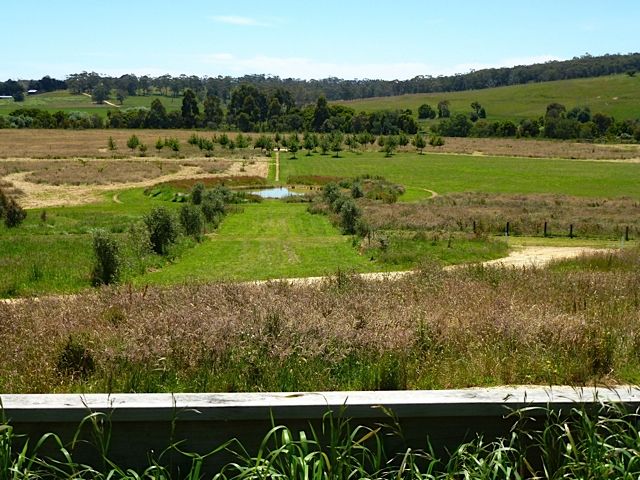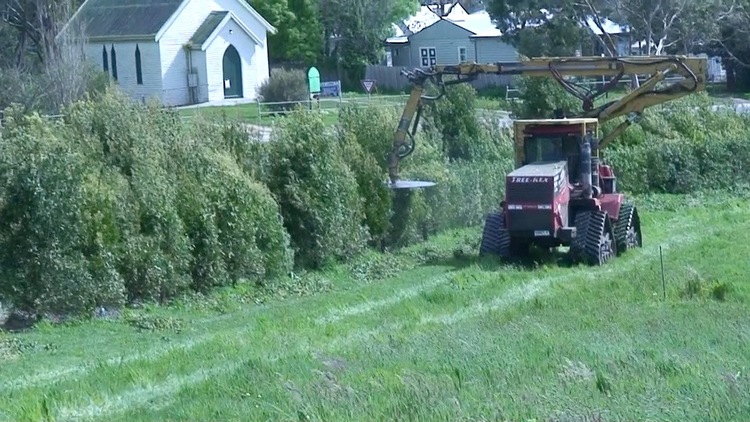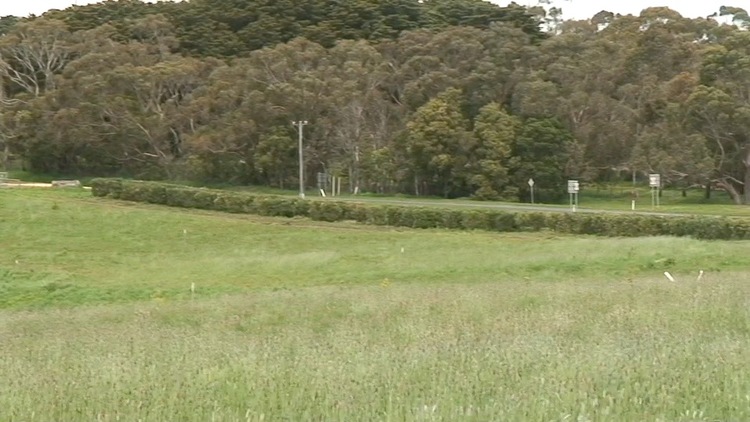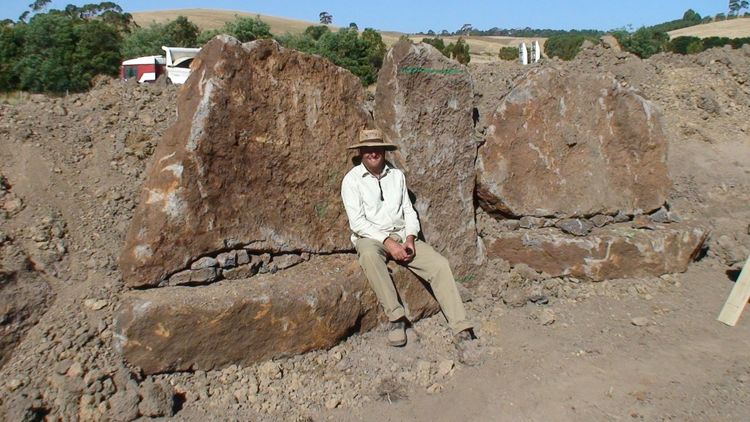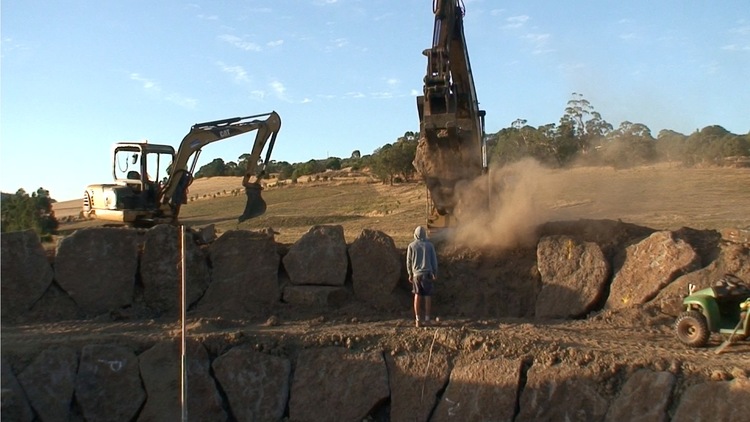Spring 2010
The sun is shining and everything is growing. New leaves are sprouting on all the new and established trees, and we have been busy with all the usual spring tasks, including weeding, mulching, fertilising etc.
Since July I have planted most of the remainder of the 2010 tree list including a grove of 14 Heritage Apples. The apple variety is called "Court of Wick" dates from 1790 and is an extremely hardy juicy sweet dessert red apple. Here is a fantastic quote about the Apple tree written in 1240 AD-
'Malus the Appyll tree is a tree yt bereth apples and is a grete tree in itself. . . it is more short than other trees of the wood wyth knottes and rinelyd Rynde. And makyth shadowe wythe thicke bowes and branches: and fayr with dyurs blossomes, and floures of swetnesse and Iykynge: with goode fruyte and noble. And is gracious in syght and in taste and vertuous in medecyne . . . some beryth sourysh fruyte and harde, and some ryght soure and some ryght swete, with a good savoure and mery.'
Bartholomeus Anglicus (Bartholomew of England) Author of On the Properties of Things (De proprietatibus rerum),
Winter 2010
This winter we have planted lots of trees, and still have more to come. Planted so far are:
15 Golden Wattle -Acacia pycnantha
10 Smooth Apple Gum -Angophora costata
13 Illawarra Flame Tree -Brachychiton acerifolius
18 Dawn Redwood -Metasequoia glyptroboides
17 Bull Bay Magnolia -Magnolia grandiflora
12 Algerian Oak -Quercus canariensis
PLUS, to be planted in the coming weeks are:
13 Sugar Maple -Acer saccharum
10 Queensland Bottle Tree -Brachychiton rupestris
15 Indian Bean Tree -Catalpa bignonioides
19 Turkish Hazel -Corylus colurna
2 Fig -Ficus carica
1 Morton Bay Fig -Ficus macrophylla
3 Monterey Pine -Pinus radiata
1 Oriental Plant Tree -Platanus orientalis
30 Pin Oak -Quercus palustris
17 Red Oak -Quercus rubra
Photo updates coming soon!
A bridge has also been put in this year to allow access to the other side of the creek, where the "Land of the Giants" will be planted.

